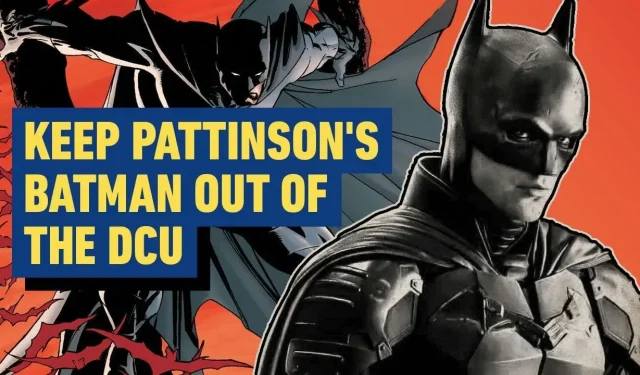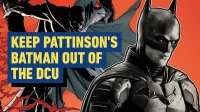The recent news surrounding the Batman franchise has ignited fervent discussions among fans, particularly concerning Robert Pattinson’s iteration of the Dark Knight and its place in the future of the DC cinematic universe. With the release of “The Batman: Part II” delayed until October 1, 2027, and uncertainty surrounding the direction of other DC projects like “The Flash” director Andy Muschietti’s “Batman: The Brave and the Bold,” the landscape for Batman fans has been in limbo. However, the confirmation from James Gunn that Pattinson’s Batman will not integrate into the new DC Universe offers a fresh perspective on the future of the franchise. This article will delve into the implications of this approach and explore what it means for both DC fans and the legacy of the character.
The State of Batman in Live Action
As the DC Universe navigates a transition, Batman fans find themselves facing an extended wait for live-action stories. “The Batman: Part II,” directed by the visionary Matt Reeves, is poised to continue the narrative established in the first film, which received critical acclaim for its noir-inspired take on the superhero. Despite the anticipation, the prolonged wait and the absence of new projects reflect a broader issue within DC’s film slate. This struggle underscores a need for a reliable and cohesive strategy concerning its flagship character.
Moreover, the delay creates a notable gap in storytelling opportunities for the Dark Knight, forcing fans to grapple with ambiguity regarding his cinematic presence. The collaborative efforts between filmmakers and the perceived disconnect between projects, such as those fostering conflicting tones and styles, add to the uncertainty around the brand. As fans eagerly await a resolution to this Batman drought, the upcoming films will have to work extra hard to resonate with audiences who are developing distinct attachments to various portrayals.
A Critical Decision by James Gunn
James Gunn’s decisive statement that Robert Pattinson will remain outside the new DC Universe is a strategic move that may ultimately benefit the brand. By not merging Pattinson’s darker, more brooding Batman with the brighter tonal shifts expected in Gunn’s vision—anchored by upcoming projects like “The Brave and the Bold”—DC is allowing for a narrative diversity that can cater to a broader audience. Gusts of fresh air can be introduced without diluting the distinctive characteristics that define each iteration of Batman.
The vision for “The Brave and the Bold” suggests that it will explore a different angle of the Batman mythos, potentially embracing elements that align more closely with traditional comic narratives. With a brand-new cinematic incarnation of the Caped Crusader anticipated under Gunn’s guidance, this differentiation enables fans to evolve their expectations while still cherishing Pattinson’s acclaimed performance in a standalone context. This approach preserves the rich legacy of Batman, allowing for multiple interpretations over time while avoiding creative dissonance.
The Future of Batman Films
As the cinematic landscape continues to evolve, questions about the future of Batman remain prevalent. The creation of unique, standalone films allows for storytelling flexibility that can explore various aspects of the character, attracting diverse audience segments. Whether through the moody lens of Reeves or the dynamic narratives proposed by Gunn, the future can now accommodate narratives that span different tones and themes, enriching the Batman mythology rather than confining it to a single vision.
Given that “Batman: Part II” is scheduled for a 2027 release, the anticipation surrounding it and its potential craftsmanship under Matt Reeves will inform how well it resonates within an evolving cinematic tapestry. As more details emerge from the DC camp, fans will remain engaged, questioning what a brave new world for Batman might look like in a landscape shared with heroes like David Corenswet’s Superman and Aaron Pierre’s Green Lantern.
Conclusion
In a time of transformation for DC, the decision to keep Robert Pattinson’s Batman separate from James Gunn’s planned universe might initially seem like a setback. However, it paves the way for a richer exploration of the character across distinct storytelling lenses. As audiences reflect on their personal connections to various Batmans, the conversation within the community will likely flourish. How do you feel about having multiple Batmans represented in cinema? Can they coexist without diminishing the legacy of the character?
https://www.youtube.com/watch?v=Yu9otWCua_o


